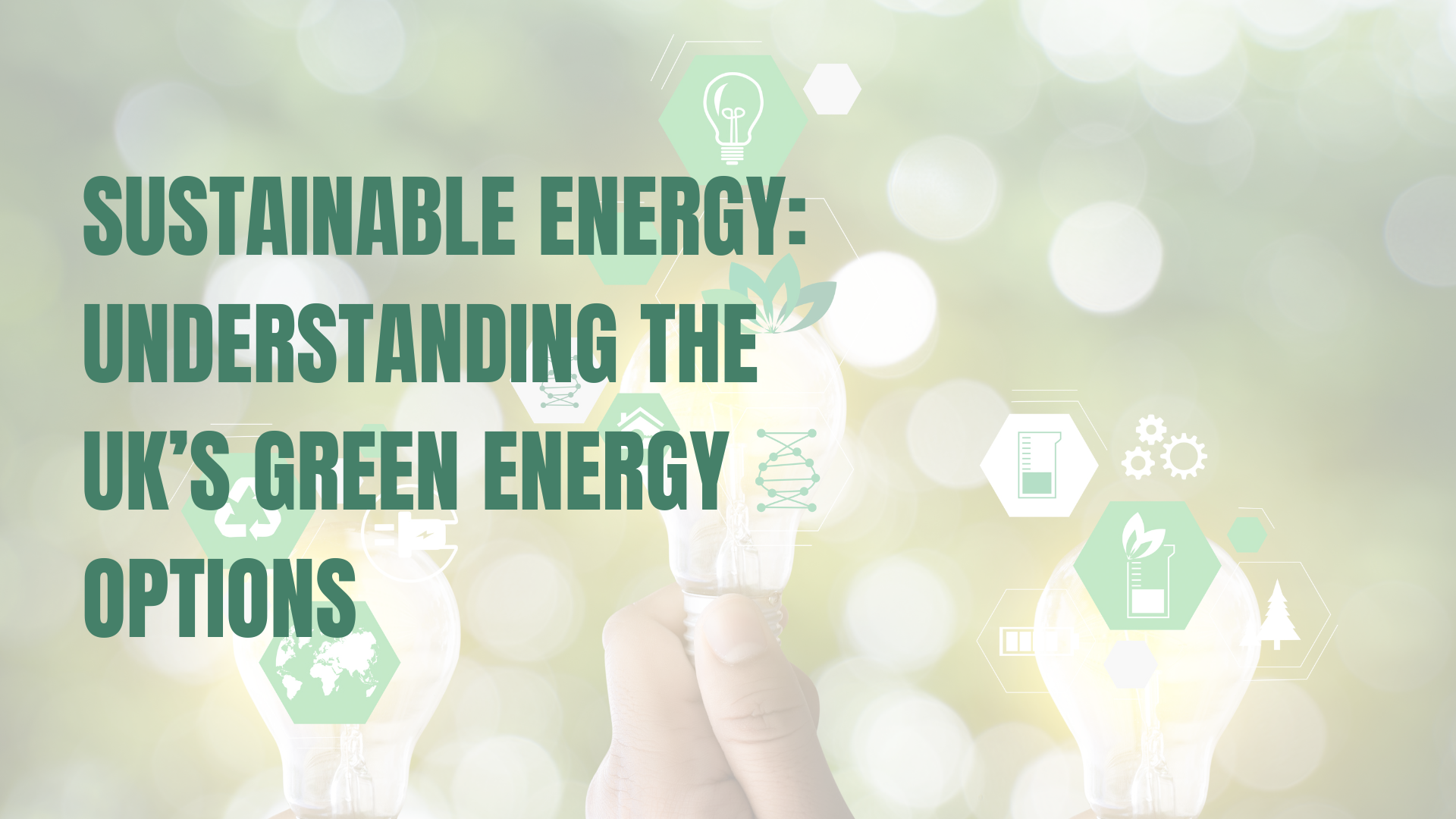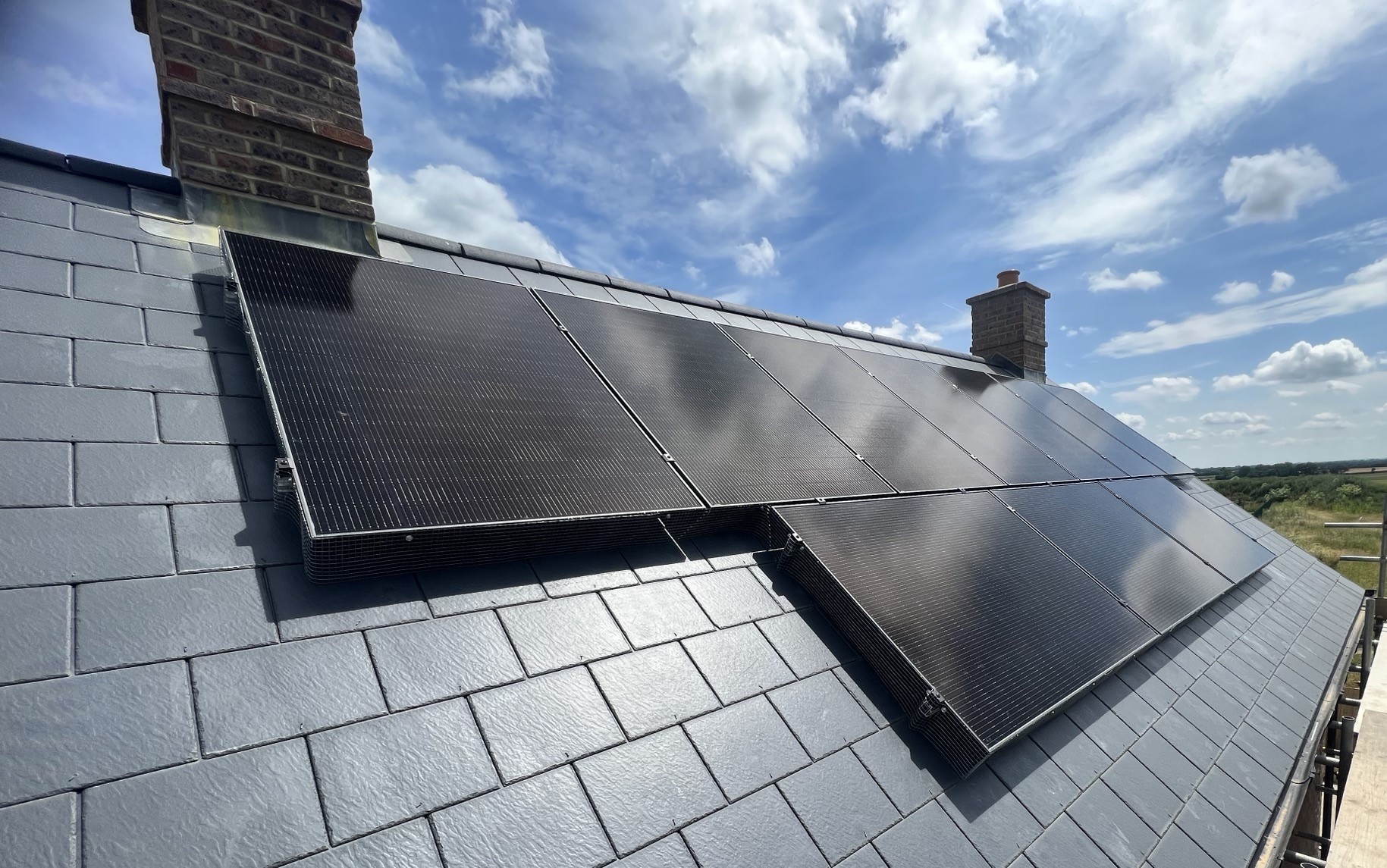As the UK races to reach Net Zero by 2050, renewable and low-carbon energy sources are reshaping how we power our homes, businesses and transport. With developments across the sustainable energy sector, we are getting closer to that target, but what options are there and how do they work?
At SolarTherm UK we believe in empowering people with clear, honest information. So here’s your guide to the main types of sustainable energy in the UK and how they contribute to a cleaner, greener future.
Solar Power
Solar panels convert sunlight into electricity using photovoltaic (PV) cells. Modern solar panels will still generate energy even on cloudy days. Solar power can be used in most situations and is the most affordable and cost-effective green energy source. Homes, schools, offices and warehouses have all seen benefits from having solar installed and large scale solar farms are now being set up across the UK to produce solar power on a larger scale to provide local communities with green energy.
Wind Power
Wind turns turbine blades connected to a generator to produce electricity. Whereas solar power can be used in domestic and small commercial properties, wind power need vast amounts of space to operate effectively so are used in onshore and offshore wind farms. Offshore wind farms are a major source of the UK’s green energy supply. Unfortunately, in the UK the grid infrastructure is not ready for the large amount of electricity wind farms can generate and regularly have to be switched off, costing the consumer millions in additional fees added onto their bills – it is estimated that by the end of 2025 up to £8bn may have been paid to companies to switch their turbines off due to risks of over-powering the grid.
Hydropower
With hydropower moving water from rivers or dams is used to turn turbines and generate electricity. Hydropower has been used for centuries for multiple tasks, but it was in the late 1800s that hydropower was first used to generate electricity. The main UK hydropower plants are in the highlands in Scotland and across Wales often as part of older infrastructure. Hydropower is highly efficient and reliable and can run 24 hours a day, 7 days a week.
Tidal Energy
Tidal systems are in their early stages of development, but one innovative project off the Scottish coast has been operating continuously for six years. They use the natural motion of the sea to produce electricity. The 4 tidal turbines off the coast of Scotland are currently producing 1.5MW each, enough to power 7,000 homes per year. If successful at the end of the trial stage, tidal energy has the potential to power millions of UK homes and businesses with clean green energy.
Biomass
Biomass is used mainly in rural areas or converted fossil fuel plants and burns organic matter, such as plant matter, animal and food waste to produce electricity and heat. While biomass does give off some air pollution, it only releases as much carbon as what was absorbed as it grew. Crops can be converted into liquid biofuel, sugar cane for example can make biodiesel to fuel cars instead of oil based diesel. Food waste is collected and taken to a recycling facility where an anaerobic digester is used to break it down and produce natural gas which is captured and used to generate electricity and heat. Human and animal waste (sewage) can be collected and turned into dried pellets to be burned instead of coal or gas. While biomass is renewable, it is still not green energy – it produces carbon emissions which are released into the atmosphere, contributing to climate change.
Nuclear Power
Nuclear fission generates vast amounts of heat and steam which drive turbines to create electricity. Around 15% of the UK’s electricity is produced from nuclear energy. A new nuclear energy plant has been granted planning permission to be built and commissioned in Suffolk recently – Sizewell C, once operational will provide clean power for over 6m homes. While nuclear power is not renewable, it is green and is a low-carbon source of power.
Why the UK Needs a Mix of Clean Energy
Solar power works best on sunny days, wind power exceeds expectations during storms and nuclear power is needed to provide stable power around the clock. By combining the different energy sources, the UK should be able to maintain a reliable and affordable, low-carbon and renewable energy supply to meet year round demands. As the UK races to meet Net Zero targets by 2050, investment is needed not only in sustainable energy, but also the infrastructure to support it.
What it Means for You
Whether you are a homeowner, small business owner or multinational company, switching to renewable energy – especially solar – is one of the easiest ways to reduce your carbon footprint.
At SolarTherm UK we design and install bespoke solar systems tailored to your home, usage and future energy needs. No hard-sell – just honest, expert advice backed by EPVS certification. We can help you make the switch to solar with confidence, ease and peace of mind.





